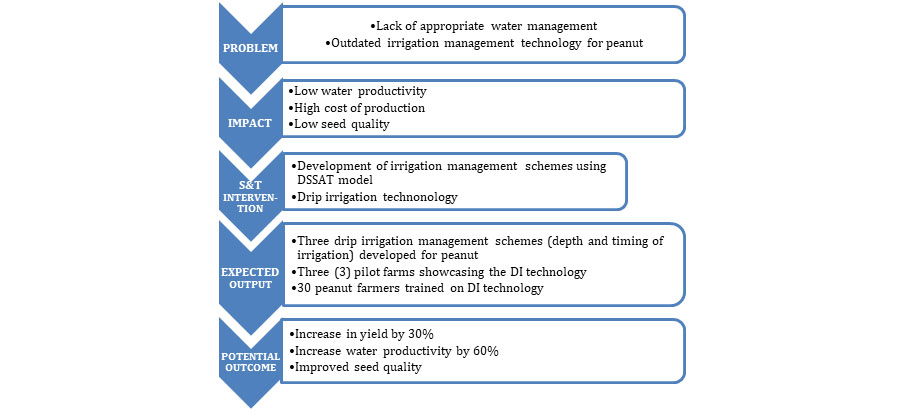


Indian Journal of Science and Technology
Year: 2020, Volume: 13, Issue: 17, Pages: 1764-1777
Original Article
Virgilio Julius P Manzano Jr1∗
1 Mariano Marcos State University, College of Engineering, Department of Agricultural and Biosystems Engineering, Batac City, 2906 Ilocos Norte, Philippines
∗Corresponding author:
Virgilio Julius P
Manzano Jr Mariano Marcos State University, College of Engineering, Department of Agricultural and Biosystems Engineering, Batac City, 2906 Ilocos Norte, Philippines
Email: [email protected]
Received Date:23 February 2020, Accepted Date:05 May 2020, Published Date:14 June 2020
Background/Objectives: A study on enhancing peanut production through drip irrigation (DI) technology was conducted to increase the productivity and profitability of peanut production in the Ilocos region, Philippines. It sought to develop irrigation management strategies suitable for peanut. Methods/Statistical analysis: Decision Support System for Agrotechnology Transfer (DSSAT) simulation was done, and field validation was conducted to achieve the objectives. The simulation activity led to the determination of the top three promising drip irrigation management schemes suitable for peanut production, which were then field validated through actual field set-up in three different locations. The best scheme (DI S9 410mm) was then pilot-tested at the farmers' field and compared with Farmers' Practice (FP) d using t-test. Findings: Using the DI scheme, dry pod yield was increased from 1.59Tha-1to 2.09Tha-1 or 31.45% increase as compared to the farmer's practice. This result is a little higher than the target increase in yield of 30%. Findings indicate that the DI is a much better method than FP, increasing the dry pod yield to as much as 70.21% during the dry season. Yield increase could be attributed to more even application of water and less water stress. On the other hand, water productivity was only increased by around 16% due to farmers' limited water application. In terms of seed quality based on seed size, DI and FP are comparable. Results the economic analysis showed that yield of peanut under DI were higher by about 0.84Tha-1 to 1.16Tha-1 as compared to FP with a Return of Investment (ROI) of 0.25. In the long run, the profitability of DI could be improved through water productivity and yield improvements. Water savings was not a factor in profitability due to under-irrigation by farmers. Novelty/Applications: The use of DI technology with the developed irrigation scheme substantially contributed to the goal of increasing the productivity of and profitability of peanut. It is especially useful for areas with limited water supply for irrigation.
Keywords: Drip irrigation; peanut; water productivity; water savings; DSSAT simulation
© 2020 Manzano Jr. This is an open access article distributed under the terms of the Creative Commons Attribution License, which permits unrestricted use, distribution, and reproduction in any medium, provided the original author and source are credited.
Published By Indian Society for Education and Environment (iSee)
Subscribe now for latest articles and news.